Building blocks
"Okwan da ho 'Travel puts together a travel plan with the traveler (s) based on the proposed wishes. Below are many building blocks from which to choose, but of course there are also other wishes. Sometimes wishes may have to do with your profession or your hobbies, let us know!
Life in Ghana is not always predictable, such as a heavy tropical rainstorm, a power failure and the long wait for the departure of a local bus (which only leaves when the bus is full).
All in all, we can say that a proposed travel program never quite works out as it was agreed on paper and changes have always been made, this always in consultation with the traveler (s).
We leave the booking of airline tickets to Ghana to the traveler (s) themselves and is beyond our involvement. However, it can provide advice and tips. We can make reservations for domestic airline tickets and accommodation reservations in advance, but these bookings are not guaranteed by STO Garant. You can find the terms and conditions of this warranty at www.sto-garant.nl/en/downloads .
Life in Ghana is not always predictable, such as a heavy tropical rainstorm, a power failure and the long wait for the departure of a local bus (which only leaves when the bus is full).
All in all, we can say that a proposed travel program never quite works out as it was agreed on paper and changes have always been made, this always in consultation with the traveler (s).
We leave the booking of airline tickets to Ghana to the traveler (s) themselves and is beyond our involvement. However, it can provide advice and tips. We can make reservations for domestic airline tickets and accommodation reservations in advance, but these bookings are not guaranteed by STO Garant. You can find the terms and conditions of this warranty at www.sto-garant.nl/en/downloads .
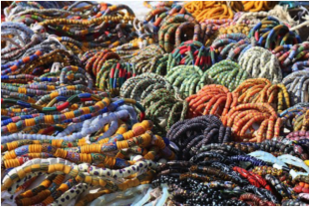
Handmade jewellery workshop
On Dodowa Road, just outside Accra
From old recycled bottles, beautiful jewellery is made using transparent glass beads and beads made from glass powder in various colours. You can watch the entire recycling process, from stamping the glass, giving it its new form and baking it, to washing and painting the baked glass beads. After this you can buy this beautiful jewellery in its many forms and sizes in the shop.
You can find the conditions for this guarantee scheme on STO Garant’s website (www.sto-garant.nl/en/downloads).
 .
.
 .
. 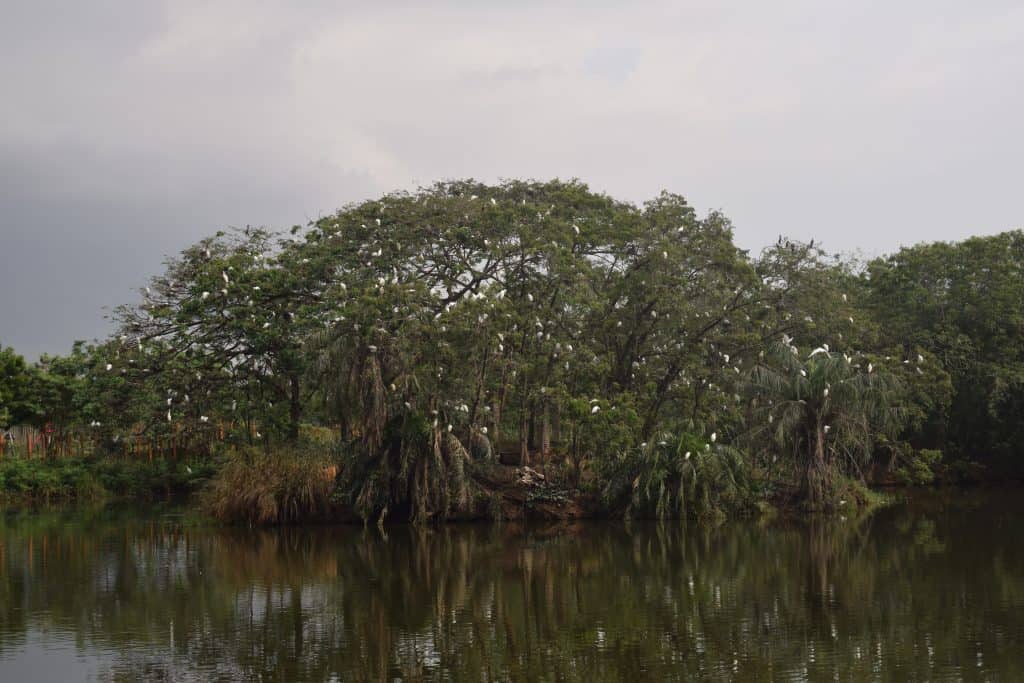
Botanical garden & Canopy walk in Legon, Accra
This botanical garden and canopy walk originated from projects of the University of Ghana. You can find different types of trees in the garden and there is plenty of space to have a picnic. For a beautiful view of the garden and the lake, you can walk across the canopy walk, a gigantic rope bridge, high up in the trees. The bridge is solid and very safe. In addition, there are spectacular opportunities for children to climb and clamber. You pay an entrance fee for the garden and a surcharge to go up the canopy walk.
You can find the conditions for this guarantee scheme on STO Garant’s website (www.sto-garant.nl/en/downloads).
 .
.
 .
. 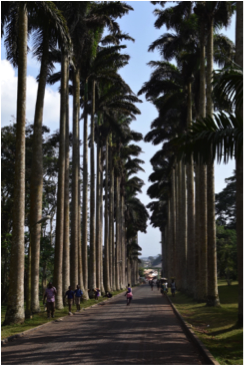
Aburi Botanical Garden
About thirty minutes from the guesthouse there is yet another botanical garden. This garden is in the Akuapim mountains, in Aburi, just north of Accra. On entering the park, you are greeted by the high Royal Palms which were planted a long time ago. You can take a lovely walk through the garden – with or without a guide. The guide can provide you with a lot of additional information regarding the trees and plants and their medicinal uses.
A visit is really worth your while.
You can find the conditions for this guarantee scheme on STO Garant’s website (www.sto-garant.nl/en/downloads).
 .
.
 .
. 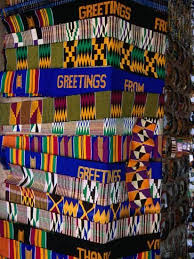
Aburi Art & Crafts Village
If you are in Aburi anyway, the local Arts & Crafts Village is well worth a visit. Here you can see woodworkers ply their trade. The craftspeople and sellers would love you to visit their shop hoping you will buy something. It is always very colourful, and people are very friendly. It is a great place to buy souvenirs, as well as a place to negotiate prices. See haggling as a game, of which humour is an important part.
There is a restaurant at the front of the Arts & Crafts Village where you can have a rest.
You can find the conditions for this guarantee scheme on STO Garant’s website (www.sto-garant.nl/en/downloads).
 .
.
 .
. 
Jamestown Café & Jamestown tour
The fishing quarter of Jamestown is one of the poorest districts of Accra and there are lots of dilapidated colonial buildings and self-built homes made from plywood and corrugated iron, but at the same time it is a lively area. For a beautiful view of the city and the busy and colourful fishing port, the top of the whitewashed lighthouse is the place to be. You can ask if someone is willing to guide you through the district at the lighthouse or at the Jamestown Café. The guide will be well-versed in telling you all about the history of the district as well as the current situation. It is not a good idea to visit Jamestown without a guide. All in all, it is impressive to experience how people live here, see the old colonial buildings and hear about how life was in days gone by.
You can find the conditions for this guarantee scheme on STO Garant’s website (www.sto-garant.nl/en/downloads).
 .
.
 .
. 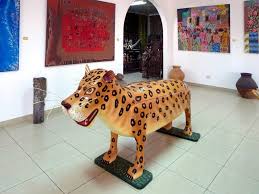
Artists Alliance Gallery
on the road along the coast
The highly valued and respected artist Ablade Glover founded this famous gallery, which has become one of the most important in Ghana.
It is laid out over three spacious floors with art, exhibited in cool marble galleries. Famous coffins shaped like crabs, trainers and eagles are shown. Everything is for sale. For people who like a swim, there is a pool at the back of the building, with sea view.
You can find the conditions for this guarantee scheme on STO Garant’s website (www.sto-garant.nl/en/downloads).
 .
.
 .
. 
Boti Waterfalls and Umbrella Rock
(close to Koforidua)
Boti Falls is a spectacular seasonal waterfall in the Eastern Region of Ghana, some 17 kilometres northeast of Koforidua, the region’s capital. This fall consists of two sections, a so-called male and female section. These can be reached via a stone staircase of 250 steps leading to the bottom of the falls. The Boti Falls are recognised by the National Tourist Board for their natural beauty. In some thirty minutes you can walk from the falls through the woods to Umbrella Rock. You can also reach the rock by car. The top of the rock can be reached going up a flight of steps. From the rock you have an unforgettable, tranquil view.
You can find the conditions for this guarantee scheme on STO Garant’s website (www.sto-garant.nl/en/downloads).
 .
.
 .
. 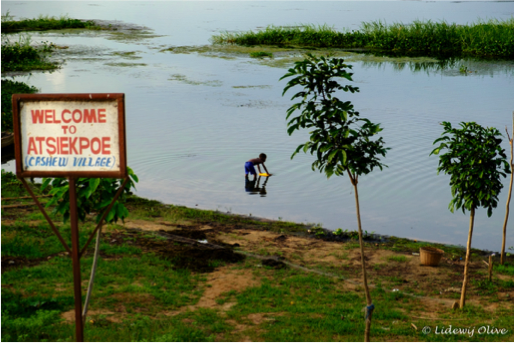
The Cashew Village Lodge in Atsiekpoe
The Cashew Village Lodge, built by Jolinaiko Eco Tours, is located on the eastern shore of the Volta River and offers an impressive view over the water and there is always a delightful breeze. You will be taken across the river in a water taxi.
The lodge consists of two buildings of mud bricks/termite clay with thatched roofs. There are five standard rooms. A simple bathhouse (bucket shower), a composting toilet, a kitchen in local style and a summer hut on the waterfront.
During your stay you can join in various activities of the villagers. The fact that you are willing to get to know the local people’s customs and traditions is highly appreciated.
You can find the conditions for this guarantee scheme on STO Garant’s website (www.sto-garant.nl/en/downloads).
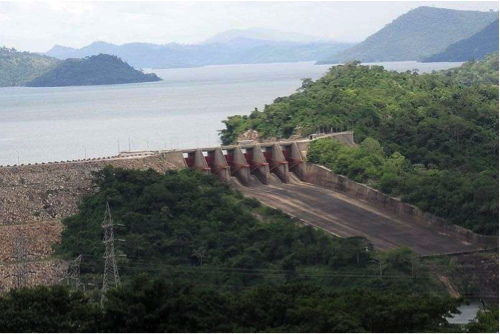
Akosombo Dam in the Volta
The Akosombo Dam, or Volta Dam, is a hydro-electric dam in the Volta in the southeast of Ghana in the Akosombo gorge. The Volta River Authority is responsible for the dam. When it was constructed, part of the Volta basin was inundated, and this is how the Volta Lake came into being. The Volta Lake measures 8,502 square metres, 3.6% of Ghana’s surface and is one of the largest artificial lakes in the world. The inundations necessary to form the Volta Lake had a considerable impact on the environment and a lot of people were forced to move.
The main task of the Akosombo Dam was producing electricity for the aluminium industry. The dam was called “the largest single investment in the economic development plans of Ghana”. You can enjoy a guided tour on the Volta Dam. The Volta Hotel also offers an impressive view of the dam.
You can find the conditions for this guarantee scheme on STO Garant’s website (www.sto-garant.nl/en/downloads).
 .
.
 .
. 
Hohoe – Wli Waterfalls
The Wli Falls are the highest falls in Western Africa. The falls are located some 20 kilometres from Hohoe, in the Volta Region, the Ewe tribe’s lands and approximately 280 kilometres from Accra. It has a low and a high section. The local people call it Agumatsa Falls, which means “Allow me to flow”. During a walk through the Agumatsa woods, you may see large colonies of fruit bats, butterflies, birds, monkeys and baboons.
You can find the conditions for this guarantee scheme on STO Garant’s website (www.sto-garant.nl/en/downloads).
 .
.
 .
. 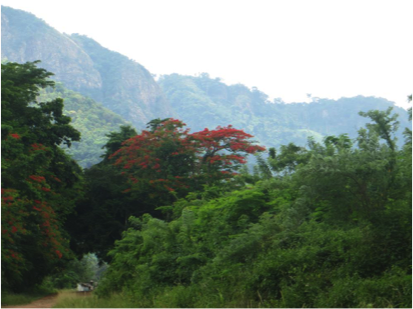
Tagbo Falls and Tagbo Lodge
Not far from the Wli Falls are the Tagbo Falls. These falls are near the village of Liati Wote in the Afadjato South District in the Volta Region. From the village you reach the Tagbo Falls after a beautiful stroll through the woods. Another route leads to the Afadjato mountain. Its summit provides you with beautiful views. Staying in the Tagbo Falls Lodge comes highly recommended. The guesthouse is reasonably new (it was built in 2017) and has five rooms. A lovely, quiet place to slow down and relax. Philo, the hostess, treats her guests to delicious meals.
You can find the conditions for this guarantee scheme on STO Garant’s website (www.sto-garant.nl/en/downloads).
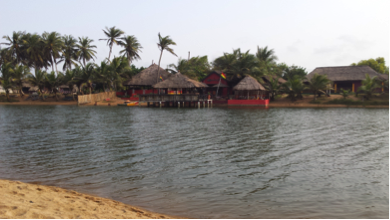
Dzita – Meet Me There
“Meet Me There” is an African Home Eco Lodge between the villages of Dzita and Dzita-Abledomi on the beautiful coast where the Volta reaches the ocean. The Eco Lodge has strong ties to both villages and the personnel loves to involve the guests in the way of life in rural Africa.
It is a not-for-profit lodge supporting the work of the NGO “Dream Big Ghana”. This NGO works towards improving sanitary facilities, education and healthcare for the local people. Your stay directly contributes to these three goals.
We know, from first-hand experience, that it is a fantastic place to relax and it is definitely worth your while to join a boat trip on the Volta River towards Ada.
You can find the conditions for this guarantee scheme on STO Garant’s website (www.sto-garant.nl/en/downloads).
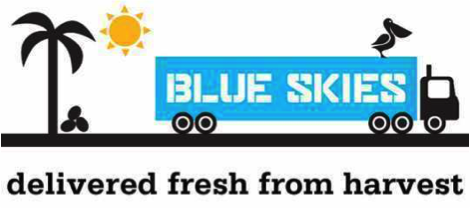
Blue Skies – Nsawam
Blue Skies was founded in 1998 by British entrepreneur Anthony Pile. The company processes and sells freshly cut locally sourced fruit and juices. From the start the approach of this company differed from that of its competitors, because it believes in ‘added value at the source’. This means that most of Blue Skies’ products are processed and packaged in the country of origin, in contrast to fruit being transported abroad and being processed there. This not only allows Blue Skies to supply products of a higher quality, it also helps generate social and economic development in the country where the fruit grows. Blue Skies supplies a large number of retailers all over the world and has a quality mark guaranteeing that the products have been packaged fresh in the country of origin.
In Ghana, over 4,000 people work in Blue Skies’ factories. There are other factories in Egypt, South-Africa, Brazil and the United Kingdom.
Okwan da ho gives you the opportunity to visit the factory in Nsawan, which cuts all fruit for customers of the biggest supermarket chain in the Netherlands, Albert Heijn. The fruit is transported by plane at night and is in the supermarket the next morning. It can’t get much fresher...
You can find the conditions for this guarantee scheme on STO Garant’s website (www.sto-garant.nl/en/downloads).
 .
.
 .
. 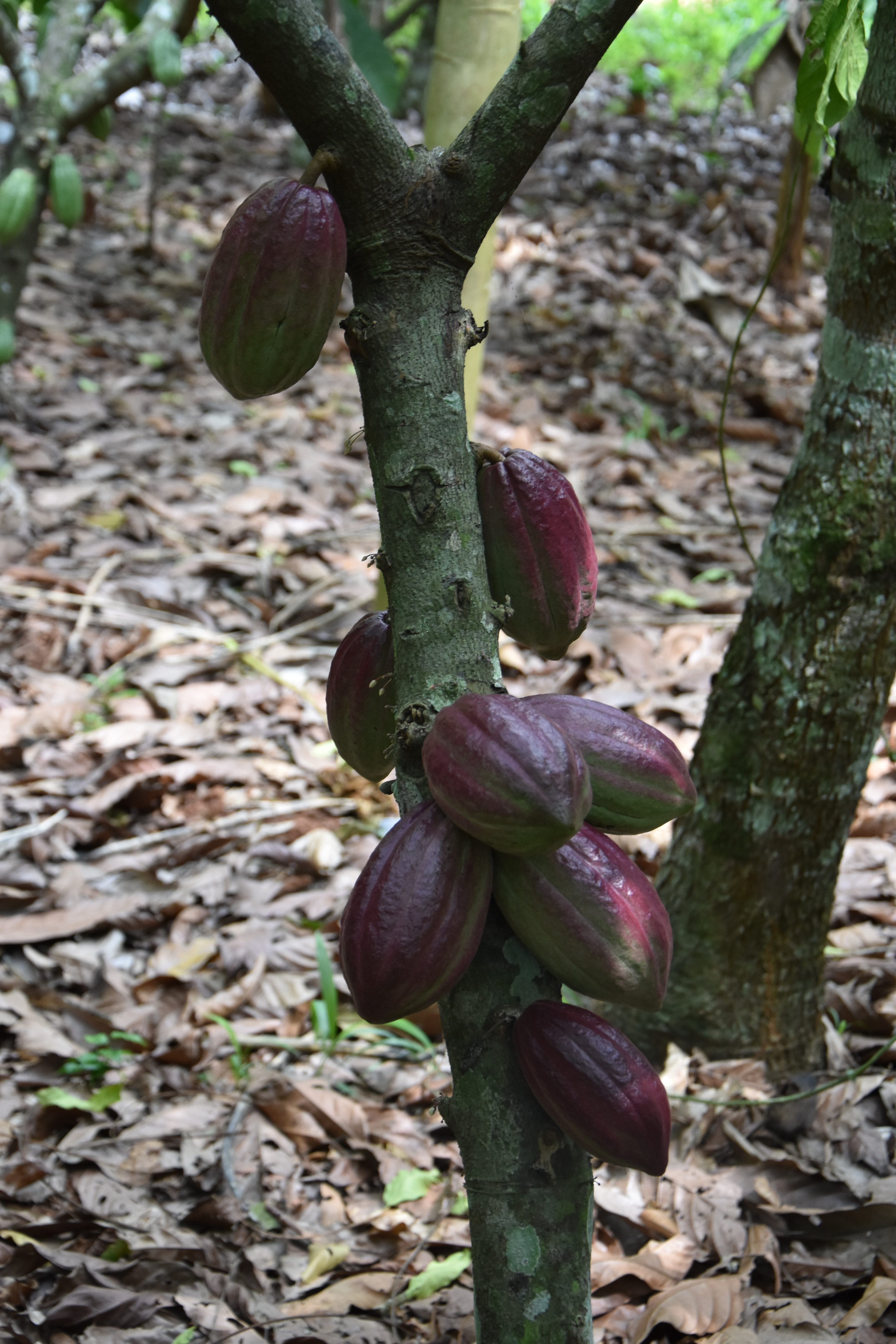
Cacao Research Institute, Bunso
Visit a cocoa plantation to see how cocoa grows and what happens during its transition from bean to chocolate bar. What other steps have to be taken?
More than 60% of the worldwide supply of cocoa is produced in Ivory Coast and Ghana. Unfortunately, the chocolate chain is an unequal one. Millions of farmers are at the start of the cocoa production chain.
Many of the 2.5 million cocoa farmers in Ghana and Ivory Coast live below the poverty line and all kinds of fundamental labour conditions are lacking.
One of the most serious consequences of this is modern slavery. The Chocolonely Foundation, known for its Tony Chocolonely bars, wants to halt these poor conditions in the cocoa chain. You can visit one of the faire-trade plantations with Okwan da ho. During these tours attention is not only paid to the entire process from bean to final product, but also to the labour conditions of the cocoa farmers.
You can find the conditions for this guarantee scheme on STO Garant’s website (www.sto-garant.nl/en/downloads).
 .
.
 .
. 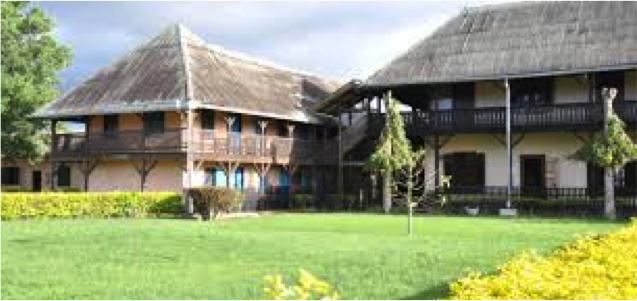
Ramseyer Training Centre, Abetifi
Ramseyer Training Centre (RTC)
The Ramseyer Training Centre (RTC) in Abetifi-Kwahu is located at the highest habitable place in Ghana (some 700 metres above sea level). Okwan da ho can take you to the Centre and ensure a lovely stay in the relative coolness. The centre was founded in 1899 and has a very big historical mission house from around that time. The building has been entirely restored and is well worth a visit. There are people around who can tell you wonderful stories about it.
The RTC is a training centre of the Presbyterian Church of Ghana (PCG). This centre works towards innovating the church, not only the PCG, but also other churches and strives towards ecumenical goals. The RTC organises numerous activities and training programmes for various target groups and with diverse themes.
You can find the conditions for this guarantee scheme on STO Garant’s website (www.sto-garant.nl/en/downloads).
 .
.
 .
. 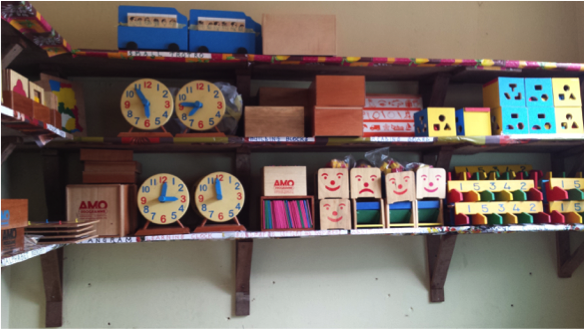
AMO Programme, Abepotia
(production of educational materials) in Abepotia.
In the 1990s, Joa & Henk founded this project, because they saw that primary schools did not have any educational materials. Together with a number of teachers they started the production of educational materials. Most are made of wood, which is in good supply in Ghana. The AMO Programme was based in a workshop at the RTC for numerous years but moved to Abepotia in 2016. This town is located near one of the exit roads of the Accra-Kumasi highway, at Nkawkaw. The AMO produces sustainable educational materials for kindergartens and primary schools in Ghana.
Each kindergarten or primary school should have educational materials from AMO or another supplier, but unfortunately most schools in Ghana do not have enough funds to purchase many educational materials. The programme has good contacts with the Ghana Education Service (GES) about the purchase of educational materials, but it will take a while before the GES can provide them to all schools. On the other hand, many private schools are able to purchase educational materials from AMO or another supplier. Support for ‘normal’ schools is now mainly provided by donors abroad.
You can find the conditions for this guarantee scheme on STO Garant’s website (www.sto-garant.nl/en/downloads).
 .
.
 .
. 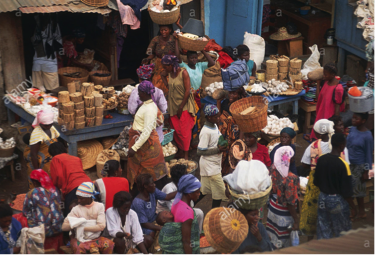
Marktet & Manhyia Palace Museum, Kumasi
largest market and Manhyia Palace.
One of West Africa’s largest open-air markets, with daily more than five thousand people selling their ware, can be found in Kumasi. You can find everything here for a good price. Haggling is a game that is played here in abundance. The market is definitely worth visiting!
The Manhyia Palace is the seat and official residence of the Asantehene or Asanteman, the king of the Ashanti. Kumasi is the capital of the Ashanti kingdom and the Ashanti Region. The first palace is currently a museum. A new palace was built by King Opoku Ware II, close to the old one. The palace is used by the current Asantehene, king Osei Tutu II.
Numerous important traditional objects of the Ashanti are on display in the palace. These objects are often used during the Adae festival, which takes place every sixth Sunday.
You can find the conditions for this guarantee scheme on STO Garant’s website (www.sto-garant.nl/en/downloads).
 .
.
 .
. 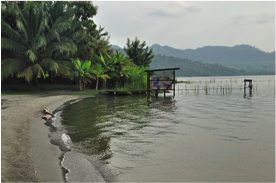
Lake Bosomtwe, south Kumasi
crater lake, idyllic spot
Lake Bosomtwe is the only natural lake in Ghana. The lake is in an old crater and has a diameter of approximately 10.5 kilometres. The lake is located some 30 kilometres southeast of Kumasi and is a popular recreation area.
About 30 villages with some 70,000 inhabitants are near the crater lake.
For the Ashanti, Lake Bosomtwe is a holy lake. According to the traditional belief, the souls of the dead come here to bid their farewells to the god Asase Ya. For this reason, fishers are only allowed to fish on the lake seated on wooden planks.
You can find the conditions for this guarantee scheme on STO Garant’s website (www.sto-garant.nl/en/downloads).
 .
.
 .
. 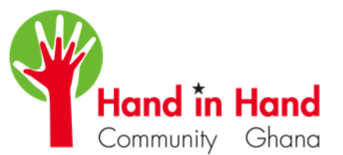
Hand in Hand, Nkoranza
Hand in Hand Community (Brong Ahafo Region in the centre of Ghana). Hand in Hand is a Christian community providing shelter to abandoned children with a mental disability.
The founders were aware of the gruesome lot of some of the so-called water children. In some areas in Ghana, people still believe that disabled children are the consequence of mothers having sexual intercourse with water spirits.
It is therefore not surprising that a child like that has a difficult life at home. The family keeps silent about the child and the mother feels – undeservedly – guilty.
Hand in Hand was founded in 1992 by Ineke Bosman and since 2009 the project is led by Jeanette en Albert van Galen from the Netherlands and two Ghanaian people from Nkoranza.
The village consists of multiple houses in which two or three children live with their foster parents. There is also a beautiful garden, a playground and a small pool and between the houses are several meeting places, used for education, music, dancing, painting and resting. In addition, there are a number of guest huts, a restaurant and a small shop selling products made by the residents.
You can find the conditions for this guarantee scheme on STO Garant’s website (www.sto-garant.nl/en/downloads).
 .
.
 .
. 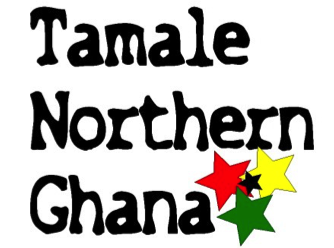
Mosque and church, Tamale
Tamale is the capital of Ghana’s Northern Region and is the fourth largest city of the country. Tamale is located 600 kilometres north of Accra in the Dagbon kingdom. The local chiefs and Tamale’s district chief are subordinates of the Dagomba Paramount Chief (king) in Yendi. The local language is Dagbani.
Thanks to its central location, Tamale is the hub for all administrative and commercial activities in the Northern Region as well as the region’s political, economic and financial capital.
Most inhabitants of Tamale are Muslim, which is clear from the large number of mosques, the largest of which is the Central Mosque. The way in which Muslims and Christians live together in Ghana is awe-inspiring. There really is a dialogue with and understanding for each other. If you wish, you can visit one of the mosques.
You can find the conditions for this guarantee scheme on STO Garant’s website (www.sto-garant.nl/en/downloads).
 .
.
 .
. 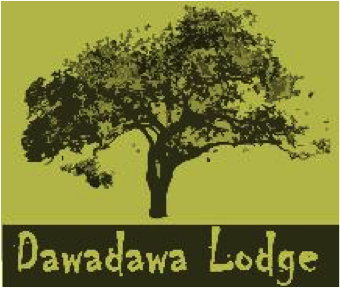
Dawadawa Lodge
For accommodation in Tamale, Dawadawa Lodge comes highly recommended. It is…read more… a pleasant, affordable guesthouse, where Jasper and his team help you to a meal or advise you about things to do in the surroundings. The guesthouse has 4 rooms and a restaurant.
You can find the conditions for this guarantee scheme on STO Garant’s website (www.sto-garant.nl/en/downloads).
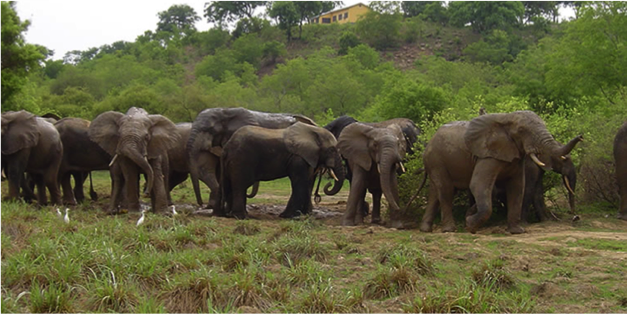
National Park, Mole
Mole National Park is the largest nature reserve in Ghana and offers the country’s best wildlife experience. Mole was the first national park founded in Ghana and has a surface of 4,912 square kilometres. The park has a very rich flora and fauna.
Mole National Park has the largest number of wildlife in Ghana and is the only place in the country where you can see elephants in their natural habitat. In addition to the elephants there are antelopes, bush bucks, monkeys, warthogs, baboons and other smaller animals.
Mole National Park is reasonably well adapted to tourists. The park has very experienced guides offering information to visitors.
All wildlife activities in the park are guided by armed rangers. The park offers foot safaris, which are unique and thrilling experiences, as you walk quite close to the elephants. It really is something you will never forget!
Foot safaris are usually organised in the early morning (at 6 am) or in the late afternoon (at 4 pm). They take about 2 to 4 hours and are guided by a ranger.
Another option is a jeep safari, again guided by an armed ranger. Such a safari can last the entire day and gives you the opportunity to see a much bigger part of the park. This is worth considering, especially if you visit the park outside of the dry season.
The Mole Motel has 34 rooms (in the form of single, double and family rooms, chalets and dormitories) as well as a restaurant. A swimming pool close to the restaurant completes the offer.
There is a viewing platform near the guest accommodations which looks out over a small lake. Especially during the dry season (from mid-December to mid-April), you can see herds of elephants grazing and bathing in the early morning and the few hours before sunset.
You can find the conditions for this guarantee scheme on STO Garant’s website (www.sto-garant.nl/en/downloads).
 .
.
 .
. 
Oldest Mosque, Larabanga
The mosque in Larabanga is the oldest in Ghana and maybe even in West Africa. The building has been here for centuries despite bad weather conditions and less successful renovation projects.
According to legend, Ayuba, a Moorish trader, crossed the Sahara in 1421. When he spent the night in Larabanga, he was ordered in a dream to build a mosque in the village. When he woke up, it turned out that the foundations had already been laid.
He built the mosque in the traditional Sudanese-Sahel style of mud and reeds. There is an entrance on each side of the building: one for men, one for women, one for the chief of Larabanga and one for the muezzin who calls the community to prayer.
Ayuba spent the rest of his life in Larabanga and when his body was buried under a nearby tree, it was said of its leaves that they had a special therapeutic effect.
In the 1970s, the mosque was in bad repair and needed to be renovated. A renovation team inserted cement in the walls in the hope of reinforcing them, but the mixture used allowed humidity to invade the wooden beams. This was followed by a termite attack, and a subsequent storm caused the weakened minaret to collapse. Supported by the World Monuments Fund, the Ghana Museums and Monuments Board and American Express, curators worked together with local craftsmen to repair the damage. The cement was carefully removed, and a mud paste was applied again, in the same way Ayuba did it 550 years previously. The minaret was rebuilt, the walls were whitewashed, and the mosque was restored in all its splendour.
Nowadays, the mosque is largely kept in repair by the local community. They still pray in the ancient building and earn money from the many tourists visiting their holy mosque.
You can find the conditions for this guarantee scheme on STO Garant’s website (www.sto-garant.nl/en/downloads).
 .
.
 .
. 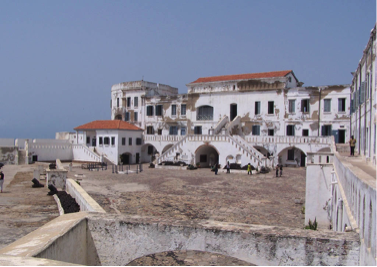
Cape Coast Castle
One of the best-known slave castles from Ghana’s dark slave-trade history is Cape Coast Castle. The castle started out as a place of trading erected by the Portuguese in what was then called the Gold Coast in 1555.
After capture by the Swedes a Swedish-African company built a permanent wooden stronghold for the trade in wood and gold in 1653. A decade later the fortress was rebuilt, in stone this time, when the Danes took over power from the Swedes.
At a certain moment, the fort came into Dutch hands and even those of a local chief, before it was conquered by the British in 1664. Through the years, the fort was used increasingly for the slave trade, which culminated in the 18th century. In 1700, the fort was transformed into a castle and it served as headquarters of the British colonial governor.
The castle’s involvement in the slave trade stopped when the United Kingdom abolished slavery. Cape Coast Castle again became an important regular trading post. After that it was used to train soldiers.
In 1957, when Ghana gained its independence from British colonial rule, Cape Coast Castle got a new owner, the government. At a later date the Ghana Museums and Monuments Board became responsible for the slave fort.
Only at the start of the 1990s the castle was renovated thoroughly supported by donor funds. It is currently a well-visited museum and historical place of interest.
Cape Coast Castle Elmina Castle
Another famous slave fort is Elmina Castle (or St George’s Castle). This fort is situated in the town of Elmina, approximately 13 kilometres from Cape Coast Castle.
Elmina Castle is the oldest European building in Ghana. Construction started in 1482 after the Portuguese arrived on the Gold Coast in 1471. It was meant to protect the Portuguese stronghold. Through the decades, various parts of the castle were rebuilt, but trade remained the most important objective. In the 17th century, this mainly concerned the trade in people.
In 1637, the Dutch took control of the Gold Coast. They continued to use Elmina Castle to imprison slaves until their departure. The Dutch changed the castle on a number of important points. They set up a market for the public sale of slaves, for instance.
Conditions were similar to those in nearby Cape Coast Castle. Light only entered the dungeons through the door openings or a few small gaps on both sides of the ceiling. Each revolt was suppressed the hard way. Men guilty of the revolt were placed in a separate cell without daylight and were hungered until death. Women were hit and chained to cannonballs on the court.
To contravene possible attacks, the Dutch built a bastion, Fort Coenraadsburg (or St Jago) on the hill opposite Elmina Castle.
During the rule of the Dutch West India Company approximately 30,000 slaves entered Elmina Castle per year. None of them returned. This lasted until 1814 when the Netherlands abolished slavery, seven years after the UK.
In 1872, the slave fort was handed over to the British. Until the independence of Ghana in 1957 Elmina was hardly used. After that, it became a training centre for the Ghanaian police force and a school, until it became a history museum.
You can find the conditions for this guarantee scheme on STO Garant’s website (www.sto-garant.nl/en/downloads).
 .
.
 .
. 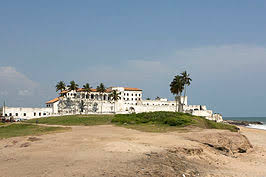
Slave fort Elmina
Another famous slave fort is Elmina Castle (or St George’s Castle). This fort is situated in the town of Elmina, approximately 13 kilometres from Cape Coast Castle.
Elmina Castle is the oldest European building in Ghana. Construction started in 1482 after the Portuguese arrived on the Gold Coast in 1471. It was meant to protect the Portuguese stronghold. Through the decades, various parts of the castle were rebuilt, but trade remained the most important objective. In the 17th century, this mainly concerned the trade in people.
In 1637, the Dutch took control of the Gold Coast. They continued to use Elmina Castle to imprison slaves until their departure. The Dutch changed the castle on a number of important points. They set up a market for the public sale of slaves, for instance.
Conditions were similar to those in nearby Cape Coast Castle. Light only entered the dungeons through the door openings or a few small gaps on both sides of the ceiling. Each revolt was suppressed the hard way. Men guilty of the revolt were placed in a separate cell without daylight and were hungered until death. Women were hit and chained to cannonballs on the court.
To contravene possible attacks, the Dutch built a bastion, Fort Coenraadsburg (or St Jago) on the hill opposite Elmina Castle.
During the rule of the Dutch West India Company approximately 30,000 slaves entered Elmina Castle per year. None of them returned. This lasted until 1814 when the Netherlands abolished slavery, seven years after the UK.
In 1872, the slave fort was handed over to the British. Until the independence of Ghana in 1957 Elmina was hardly used. After that, it became a training centre for the Ghanaian police force and a school, until it became a history museum.
You can find the conditions for this guarantee scheme on STO Garant’s website (www.sto-garant.nl/en/downloads).
 .
.
 .
. 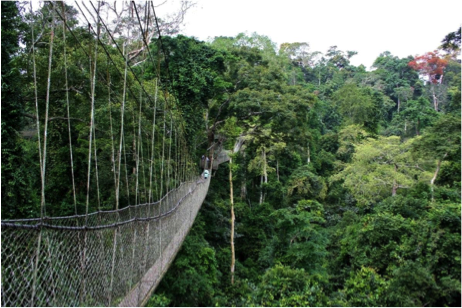
Canopy Walk, Kakum
Kakum National Park is located approximately 25 kilometres from the coast in Ghana’s Central Region and has a surface area of 375 square kilometres. The reserve was founded in 1931, but only became an official national park after a first study of the birds living there. The area consists of tropical rainforest.
A unique characteristic of the park is that it was founded at the initiative of the local population and not by the State Department of Wildlife, responsible for nature conservation in Ghana. It is one of 3 locations in Africa with a Canopy Walk. The one in Kakum is 350 metres long and connects seven treetops.
The most important endangered species in the park are the Diana monkey, the bongo (a type of forest antelope), the yellow-backed duiker and the African elephant.
It is also an important area for birds and is recognised as such by Bird Life International. The avian population of the park consists of 266 species, including eight internationally protected ones. One of those is the white-breasted guineafowl.
There are nine species of hornbills and the African grey parrot has also been spotted. The park also has a wealth of butterflies and in 1993 a new species was discovered there.
You can find the conditions for this guarantee scheme on STO Garant’s website (www.sto-garant.nl/en/downloads).
 .
.
 .
. 
Ko-Sa Beach Resort
Ko-Sa Beach Resort is an environmentally-friendly and quiet resort, built in a natural environment and managed by Nol and Annelies van de Mast. The resort is on the beach near the small fishing village of Ampenyi and close to the historical towns of Cape Coast and Elmina. Kakum National Park is also not far away.
Discover the unique atmosphere of the traditional huts, combined with modern comfort. Explore Ghana’s historical coast, take a beach walk to Elmina or dream away in the exotic garden. There are several activities available or you can just enjoy a lovely beach holiday in paradise.
You can find the conditions for this guarantee scheme on STO Garant’s website (www.sto-garant.nl/en/downloads).
